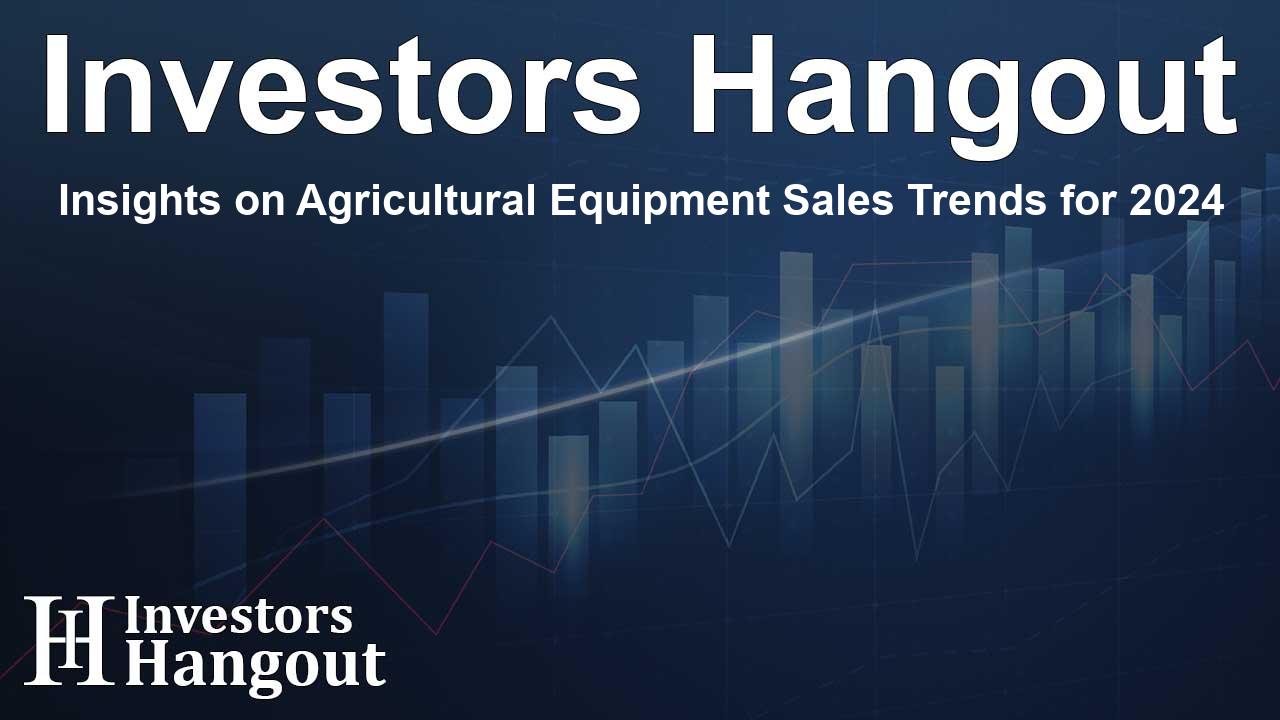Insights on Agricultural Equipment Sales Trends for 2024

Understanding the Agricultural Equipment Market
The agricultural equipment market is an essential component of the agricultural industry, impacting productivity and efficiency on farms across the United States. Each month, insights from organizations like the Association of Equipment Manufacturers (AEM) provide valuable information regarding sales trends and inventory levels of farm machinery, primarily tractors and combines. This detailed analysis aims to highlight the recent developments observed within the agricultural equipment sector.
Current Sales Figures for October
According to AEM's latest report, October indicated a notable shift in the sale patterns of agricultural tractors and combines. These reports compile data from AEM member companies, focusing on retail sales and market share. For October, the total sales of 2WD farm tractors experienced a decline, reflecting challenges faced by the agricultural sector. More specifically, the numbers revealed a reduction of approximately 14.7% compared to the previous year, with sales totaling 20,631 units.
Breakdown of 2WD Farm Tractors
In the breakdown of the 2WD farm tractor segment, several power categories showed significant changes. For the < 40 HP segment, sales dropped to 12,185 units, down from 13,303 in the same period last year, a decline of 8.4%. The 40 < 100 HP category also faced a reduction, selling 5,868 units compared to 6,731 units in 2023, reflecting a decrease of 12.8%. The most prominent decline was observed in the 100+ HP category, where sales plummeted by 37.8%, resulting in only 2,578 units sold in October.
4WD Farm Tractors and Overall Trends
Although the overall market faced challenges, 4WD farm tractors saw minimal changes, with sales reaching 723 units, a slight reduction from 726 in 2023. Compounding the data, the total farm tractor sales which include both 2WD and 4WD segments fell to 21,354 units. This drop not only signifies a challenging market landscape but also reflects the ongoing shifts in agricultural demands and sales strategies as farmers adapt to evolving conditions.
Self-Propelled Combines Sales Analysis
The report also highlighted the performance of self-propelled combines. In October, sales were reported at 516 units, marking a significant reduction of 34.6% compared to 789 units sold in the same month last year. Year-to-date statistics present a similar trend, with 4,977 units sold thus far, which equates to a decrease of 23.1% from the previous year’s figures. These statistics are indicative of reduced farming activity and potential economic stressors affecting the agricultural industry.
Implications of Sales Trends
The declining sales numbers of both tractors and combines indicate a broader trend impacting agricultural operations. Factors contributing to these changes might include fluctuating crop prices, changes in government policies, and advances in technology that lead to more efficient farming methods, which could lessen the necessity for new equipment. Farmers are becoming more selective and cautious with investments, opting for equipment that will ensure the best returns on their agricultural inputs.
Looking Ahead
As we approach the end of the year, stakeholders in the agricultural sector will keenly monitor these trends. Understanding the dynamics of equipment sales will be crucial for manufacturers, dealers, and farmers alike as they plan strategy and investments for the next planting season. The AEM Ag Tractor and Combine Report plays an important role in this landscape, offering insights that enable informed decision-making.
Engagement with AEM
For those seeking further information on trends in agricultural equipment, the AEM provides extensive resources and data. This month’s report underscores the necessity for ongoing dialogue about equipment sales and the agricultural landscape as a whole.
Frequently Asked Questions
What does the AEM Ag Tractor and Combine Report include?
The report includes monthly retail sales data of agricultural equipment, focusing on tractors and combines, based on input from AEM member companies.
Why are the sales of tractors and combines declining?
Declining sales can be attributed to various factors, including economic conditions, fluctuating crop prices, and advancements in agricultural technologies that affect purchasing decisions.
How does the report assist farmers and manufacturers?
The report provides essential insights into market trends, helping farmers and manufacturers make informed decisions regarding equipment purchases and sales strategies.
Who can access the AEM data?
The data is primarily available to members of the AEM and is also accessible for stakeholders in agriculture looking to understand market dynamics better.
How often is the AEM report published?
The AEM Ag Tractor and Combine Report is published monthly, offering up-to-date statistics and analysis on sales trends in agricultural equipment.
About The Author
Contact Owen Jenkins privately here. Or send an email with ATTN: Owen Jenkins as the subject to contact@investorshangout.com.
About Investors Hangout
Investors Hangout is a leading online stock forum for financial discussion and learning, offering a wide range of free tools and resources. It draws in traders of all levels, who exchange market knowledge, investigate trading tactics, and keep an eye on industry developments in real time. Featuring financial articles, stock message boards, quotes, charts, company profiles, and live news updates. Through cooperative learning and a wealth of informational resources, it helps users from novices creating their first portfolios to experts honing their techniques. Join Investors Hangout today: https://investorshangout.com/
The content of this article is based on factual, publicly available information and does not represent legal, financial, or investment advice. Investors Hangout does not offer financial advice, and the author is not a licensed financial advisor. Consult a qualified advisor before making any financial or investment decisions based on this article. This article should not be considered advice to purchase, sell, or hold any securities or other investments. If any of the material provided here is inaccurate, please contact us for corrections.
